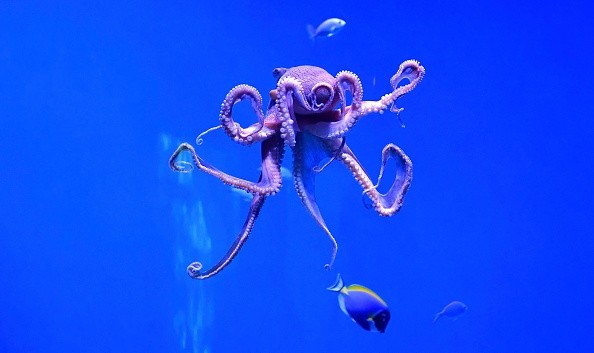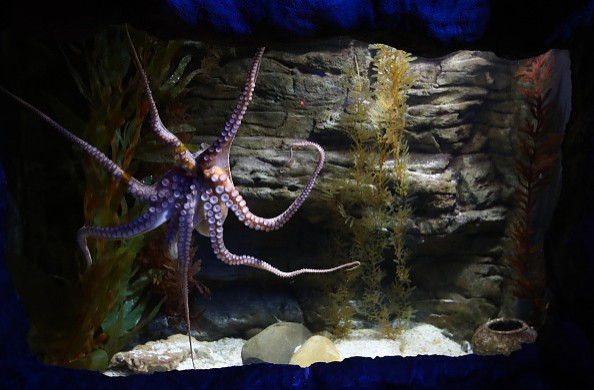Octopuses, those sassy but strange cephalopods, seem to encapsulate everything spooky and enigmatic about the sea-the idea of their soft, spongy bodies lying in the deepest recesses of the ocean has inspired creatures spanning from the Kraken to the Caribbean Lusca.
Their unearthly appearances, enhanced by unfurling arms, also appear in more modern monsters and villains, such as Disney's Ursula and Spider-Doc Man's Oc, as per Smithsonian Magazine.

Here are 7 weird facts about octopuses
They are way old
The oldest known octopus specimen dates from roughly 296 million years ago, during the Carboniferous period.
The specimen is from the Pohlsepia species and is on exhibit in Chicago's Field Museum.
Researchers aren't sure, but there might be an ink bag as well. In other words, octopuses had already defined their form for millions of years before life on land developed beyond tiny pre-dinosaur reptiles.
They have three hearts
Two of the hearts are dedicated to moving blood further than the animal's gills, while the third keeps the organs circulating.
When the octopus swims, the internal heart actually stops beating, explaining why the species prefers to crawl instead of swim, which vents them.
They use camouflage for self-protection
Octopuses are highly clever animals who have evolved a variety of techniques to escape or deter would-be assailants over tens of millions of years.
They can blend in with the colors and textures of their surroundings, allowing them to remain undetected.
If a predator approaches too closely, octopuses may swiftly flee by spewing water via a muscular tube called a siphon.
Octopuses may also emit a cloud of black ink that obscures them and dulls the sense of smell of intruders.
Octopuses can squeeze into impossible-to-fit nooks and crannies thanks to their soft bodies, as long as the holes aren't smaller than their only hard parts: their beaks.
Octopuses are really smart

The octopus is a foolish organism that will approach a man's hand if submerged; nonetheless, it is tidy and fiscally prudent in its routines.
It simply laid up stores in its nest, and, after gobbling up everything that is eatable, it dislodges the shells and outer layer of crabs and shell-fish, and the bones of small fishes, according to the Greek philosopher in his History of Animals, written in 350 BC, as per the National Geographic.
Hundreds of suckers line the octopus' arms, each of which can move independently thanks to a sophisticated bundle of neurons that serves as a brain, allowing the animal to touch, smell, and control items.
Octopuses can open clamshells, move pebbles, and even destroy aquarium filtration systems.
They may form ideas about individuals as well; one squirted water down the back of a keeper it seemed to detest on a regular basis. To create a ruckus, another sprayed a water jet at a lamp.
Also Read: Octopus Ancestors Among the First Animals on Earth, Dating Back to 509 Million Years Ago!
They squirt ink not just for escape
Enemies are also physically harmed by the ink. It includes a substance called tyrosinase, which aids in the management of the natural pigment melanin formation in humans.
Tyrosinase, on the other hand, creates blinding irritation when sprayed in a predator's eyes. It also muddles the senses of smell and taste in organisms.
Octopuses who do not escape their own ink cloud can perish as a result of the protective concoction.
Octopuses have blue blood
Octopuses evolved copper-based blood called hemocyanin, which colors their blood blue, to live in the deep ocean instead of iron-based blood.
When the water temperature is low and there isn't much oxygen around, this copper base transports oxygen more efficiently than hemoglobin.
They are, however, particularly sensitive to variations in acidity as a result of their system. Octopuses can't get enough oxygen if the pH of the surrounding water becomes too low.
As a result, scientists are concerned about the effects of climate change-related ocean acidification on species.
Mating is their death sentence
Octopuses only live for a short time after mating and having children, and they die soon after. External fertilization is used by this species.
Following that, men walk off to die. Females may deposit up to 400,000 eggs, which they meticulously preserve and care for.
But instead of starving to death, the female's body turns on her after the eggs hatch.
Her body initiates a cascade of cellular suicide that spreads from her optic glands to her tissues and organs until she dies.
© 2025 NatureWorldNews.com All rights reserved. Do not reproduce without permission.





